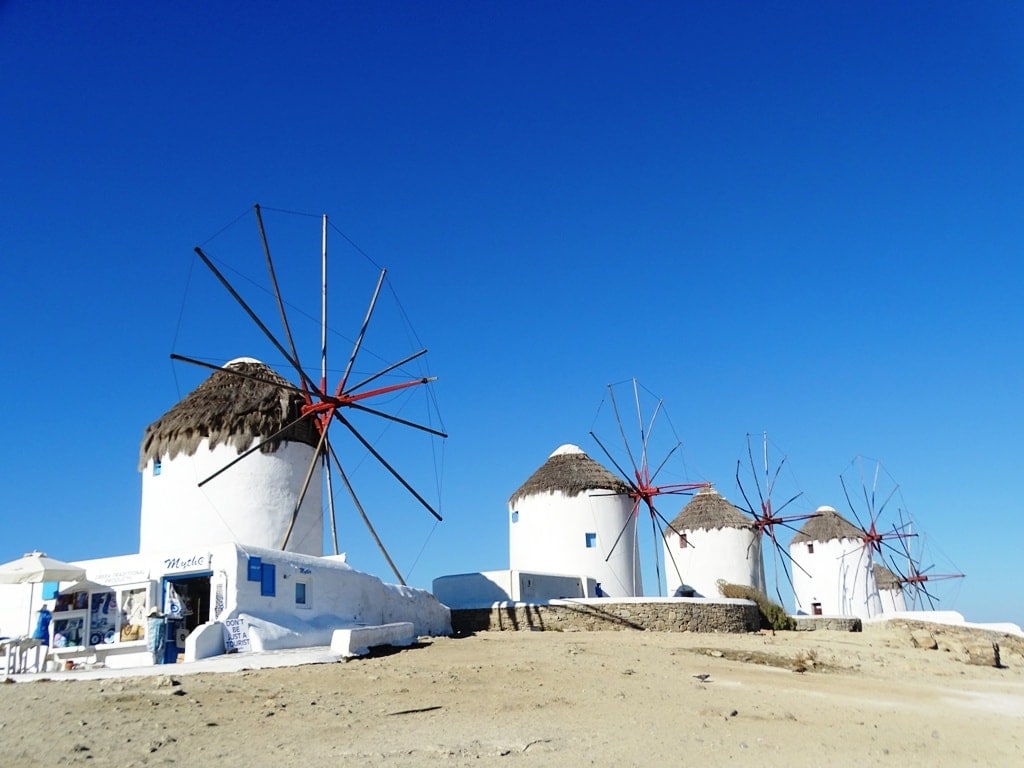One of the most iconic images from Greece is one of round, whitewashed windmills against the clear, azure sky of islands and mountain slopes.
The windmill has been an integral part of Greece’s heritage and economic history. Though its invention can be traced as far back as 1,500 years with ancient Greek inventor Heron and his wind-powered organ, windmills became a staple during medieval times, around the 12th and 13th centuries AD. Most windmills are found in the islands, particularly in the Cyclades.

A windmill was costly to make, and highly important for the community which it served, as it was mostly used to crush grain into flour, which then was used to make bread and other food.
Windmills were built in places that were most exposed to northerly winds but at the same time in close proximity to villages, with good access to them by beasts of burden. The structure of a windmill tended to be uniform: a cylindrical building with a conical straw roof and a wheel of several spokes with triangular sails at the edges to make the wheel turn as the wind blows.
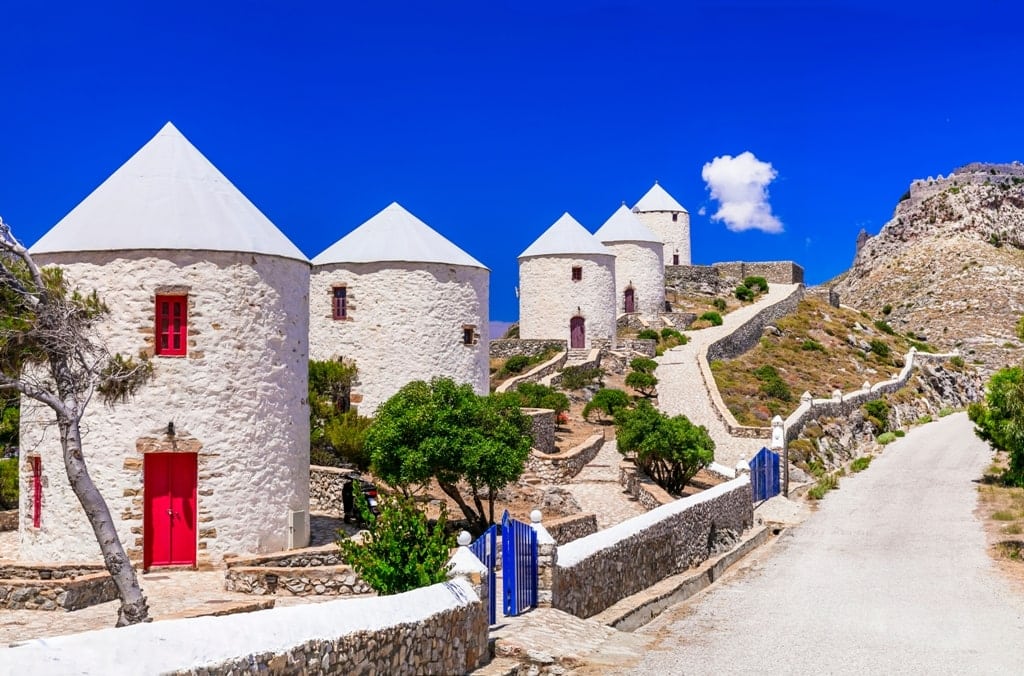
The turning of the wheel powered a system of axes and millstones that would grind the grain. If the wind was strong enough and kept on blowing, a windmill could work around the clock and produce 20 to 70 kilos of flour an hour. Villagers would take their grain to the mill and receive the equivalent in flour minus a commission (usually around 10% of the produce) for the millman.
The millman could control the sails of the windmill’s wheel to always catch the wind and directions, not unlike the captain of a sailboat. Millmen had a tradition of becoming wealthy, and of benefitting from a frequent monopoly they enjoyed as the windmill often was the only one available to the villagers nearby.
Nowadays windmills aren’t necessary for their original use. Many have fallen into disrepair but there are a lot of them that are still very well preserved and even in full working condition!
Several windmills have been converted into museums, art halls, galleries, and even hotels or houses, as they have fantastic panoramic views of the area they are in.
Where to find windmills in Greece?
There are several locations in Greece that are famous for their windmills, and here are some of the best ones!
Mykonos
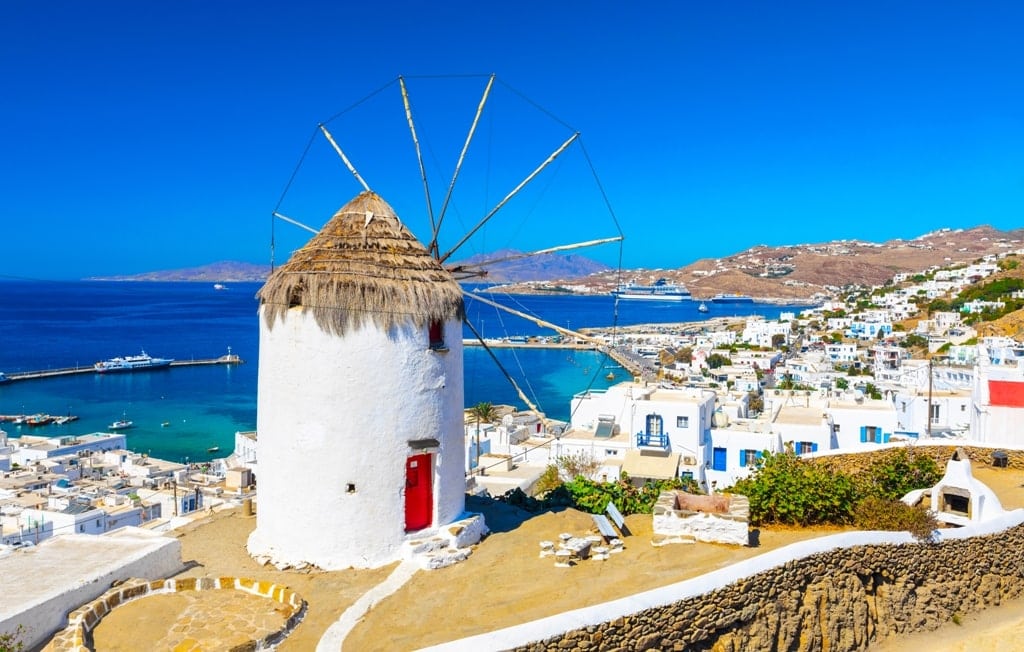
Mykonos is perhaps the most famous place to see windmills. There were 28 of them built from around the 16th century to the 19th century, before the decline in their use. Of them, 16 remain in good condition, renovated into houses, museums, and galleries.
Mykonos’ whitewashed windmills were so important that they made the island a waystation for ships, from where they would stock up on dried-up rusks and bread. You will find the big, three-story edifices in several villages, but the most iconic ones are standing in a row in the area of Kato Mili. Of them, two can be visited and admired as a unique time capsule full of insights about a time long gone.
Ios
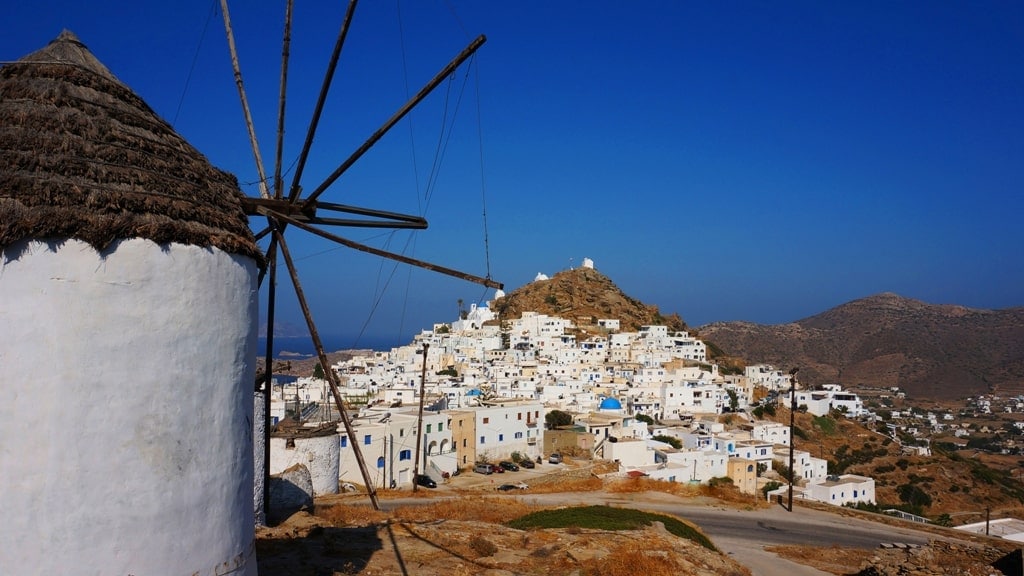
Ios’ whitewashed windmills are at the topmost hill of the island. They are the most well-preserved ones to be found, and some have been converted into homes. There are some of those as you enter the Chora, Ios’ main town, as well.
Visit the windmills in Ios for the great view and the feeling of tradition and timelessness they offer!
Serifos
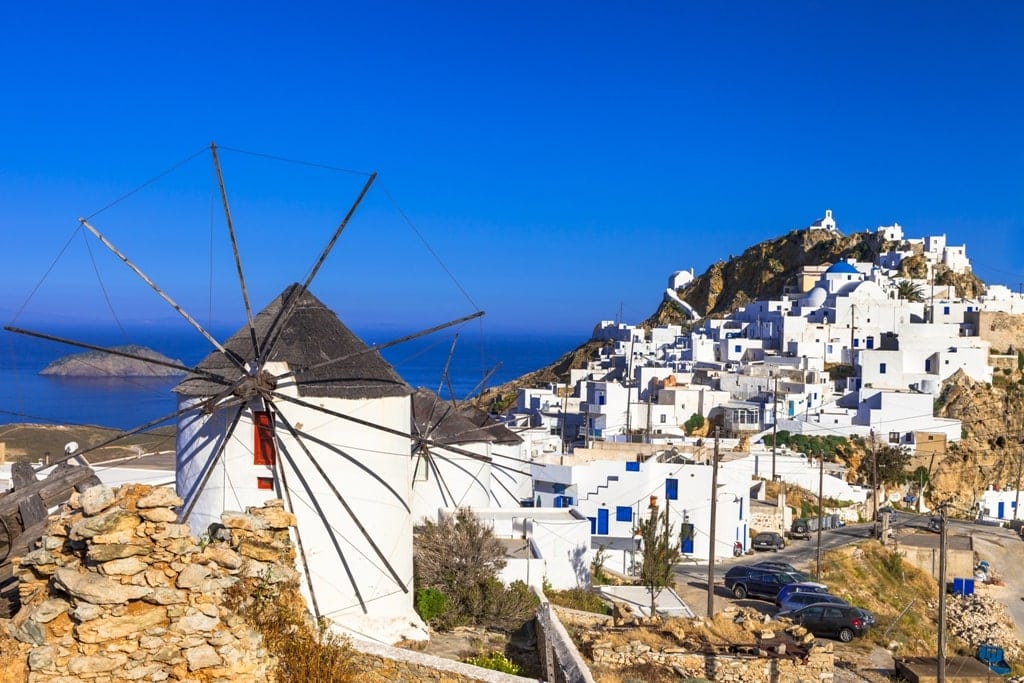
Serifos boasts three perfectly preserved windmills at its Chora, its main town. These are beautiful, whitewashed structures with the traditional conical straw roof and the triagonal sails. You will find them at the Windmill Square.
They all are of the type with the steady roof which could operate at full speed only with one direction of the wind. However, scattered across Serifos are windmills with mobile conical roofs and other rarer types that you can explore, though they aren’t as well preserved.
Astypalaia

A series of beautiful, whitewashed, red-cone-roofed windmills await you as you enter the Chora, the main town, of Astypalaia in the Dodecanese. It is estimated that they were built around the 18th or 19th centuries. The windmills aren’t in use but they will offer a wonderful setting for your photos, together with the imposing Venetian castle of Querini on top of the hill.
Patmos

At Patmos Island in the Dodecanese, you will find its three iconic windmills. Unlike Mykonos or Ios, these are not whitewashed but retain the warm earthy tones of the stone with which they were built. Of these windmills, two were built in the 1500s and one in the 1800s. All three worked around the clock thanks to the constant winds until electricity came to the island in the 1950s and made them obsolete.
The windmills have been fully restored, and you have the unique opportunity to see one of them work as before: organic flour is ground with the windmill and the entire process is open to the public. The other two windmills operate producing electricity by converting wind power and water.
Visit Patmos’ windmills for a unique experience and breathtaking views of the entire island.
Chios
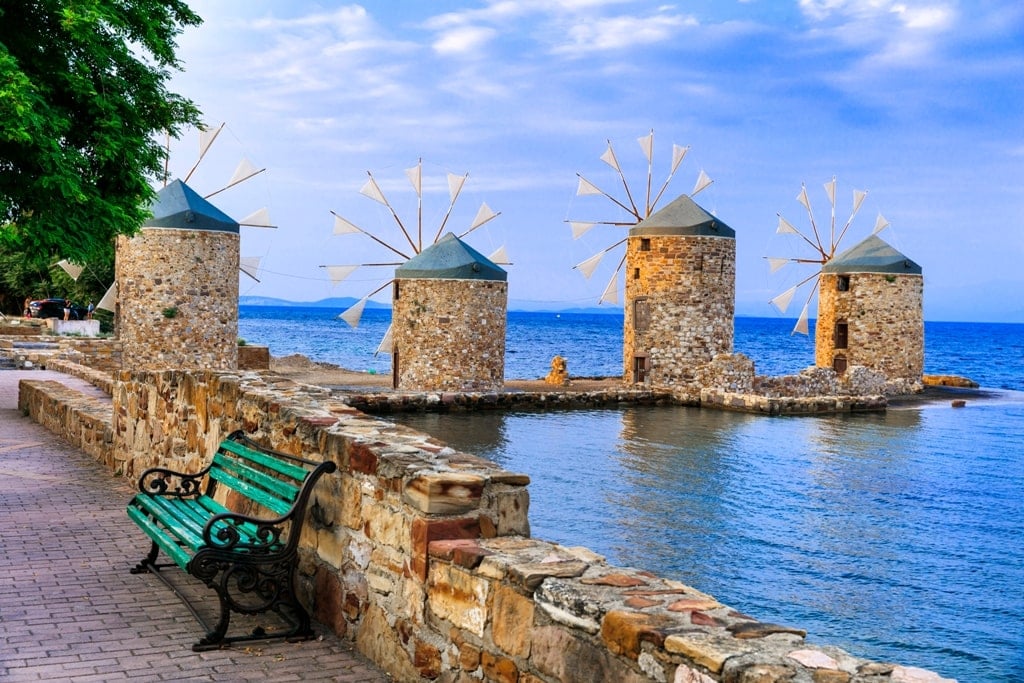
On the island of Chios, you will find four windmills in a row, on a strip of land jutting out into the sea, near the area of Tampakika. These windmills served the needs of the tanneries nearby, as there was a big leather industry developing in the area. They were built in the 19th century and are a site of great tourist interest and attraction.
Like the windmills of Patmos, they are not whitewashed but retain their stonework’s natural coloring.
Rhodes
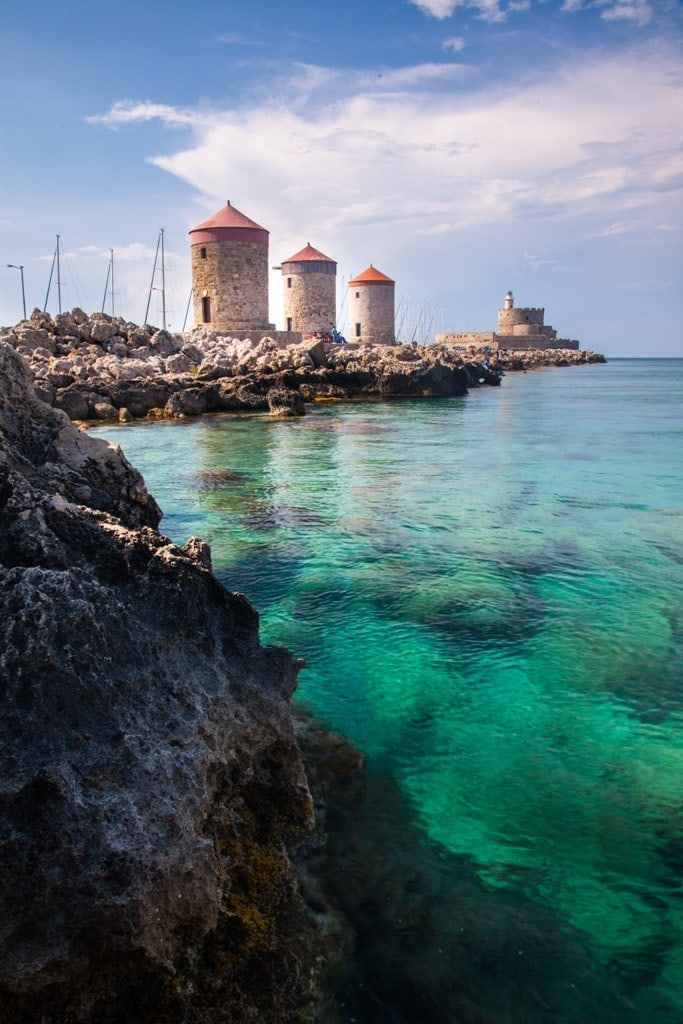
Situated at Mandraki, these beautiful windmills date from the 1600s and are a prime example of medieval construction. Their stonework is smooth and its dark earthy tones contrast with the warm red of their conical roof.
Just like most windmills in Greece, these were built to process grain. It is said there used to be around 14 windmills, but they disintegrated over time. Those that remain stand next to the seaside, offering you a unique backdrop for your relaxation. They are also stunning to admire against the sunset.
Lasithi, Crete
The windmills you will find in Crete, in the region of Lasithi, are the most modern ones in Greece when it comes to traditional structures. They are whitewashed, narrow, with a very small conical roof, and big wheels with triangular sails. They were built to help with irrigation rather than grain processing. At one time there were more than 10,000 of them in the area, but now about half of those remain.
Visit them for beautiful views, and a piece of unique history.
Karpathos
The windmills in Karpathos are a trademark of Olympos village. They are also of the oldest ones built, as some were constructed as early as the 10th century AD. All of the windmills face west, to take advantage of the winds of Karpathos. They are whitewashed, and elliptical, with narrow windows and a flat roof. Some of them are often hidden by the clouds, as they are built on the upper slopes of the mountain.
Many of them have fallen into disrepair, but there is one that is well-preserved and converted into a museum for you to enjoy.

